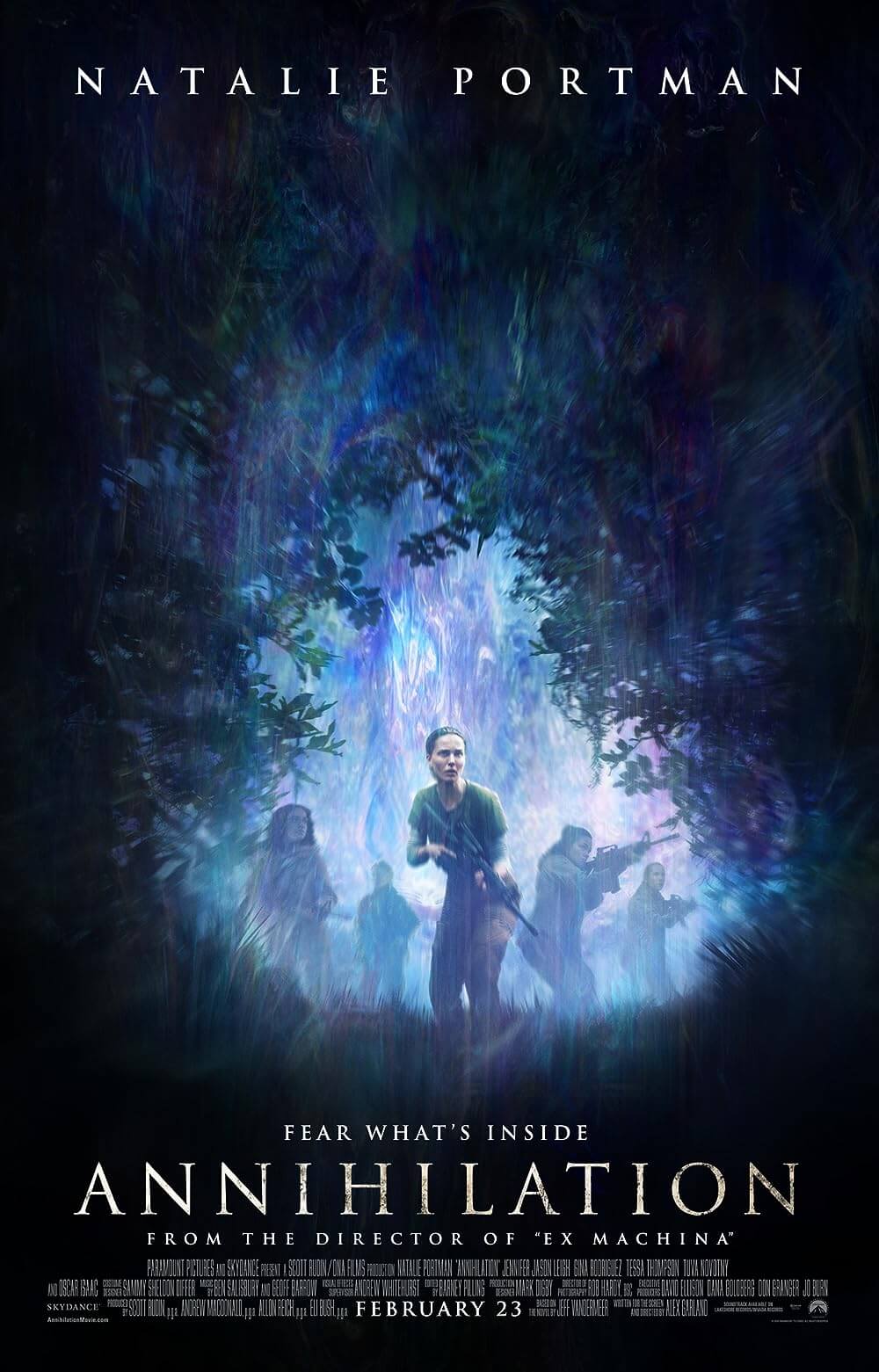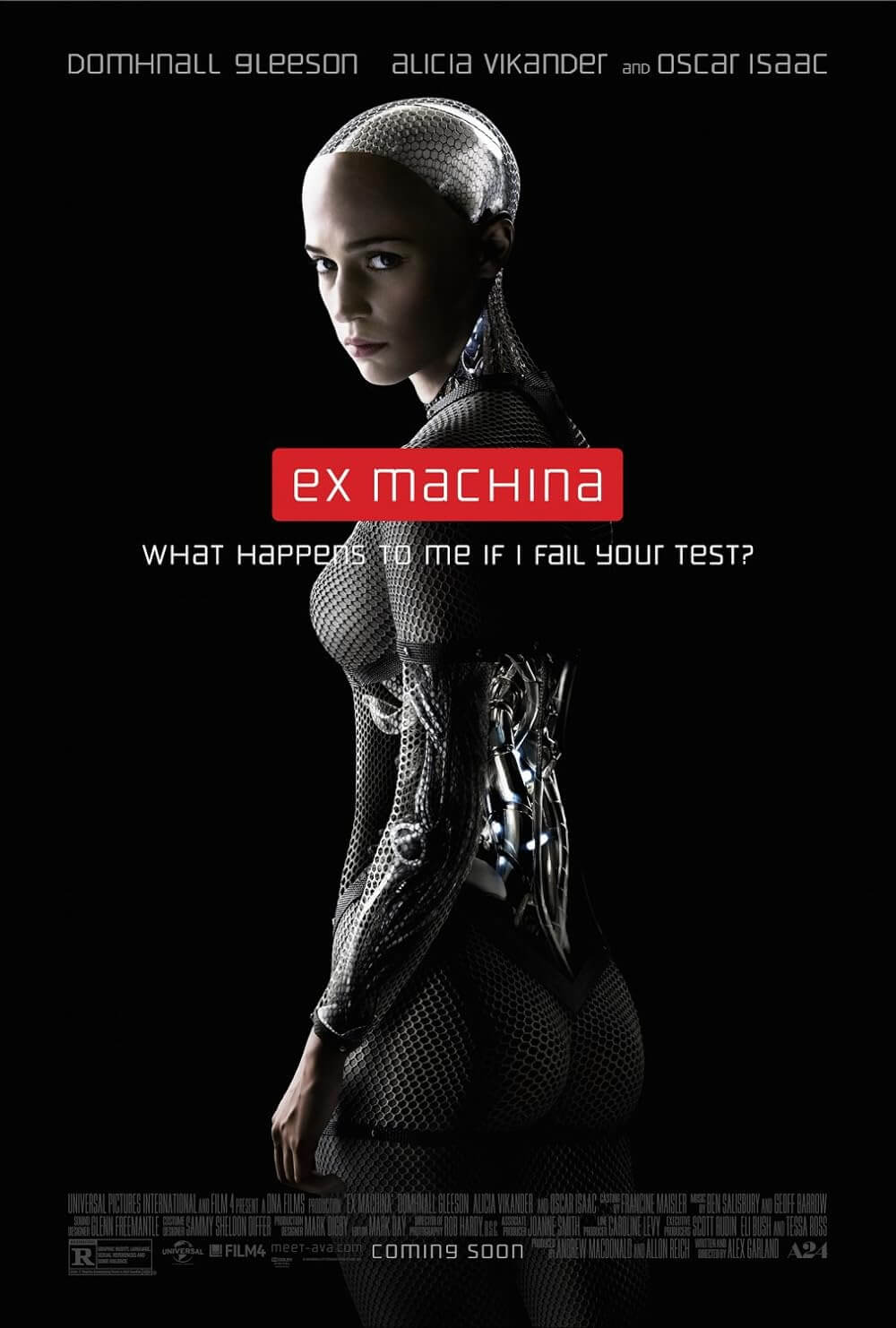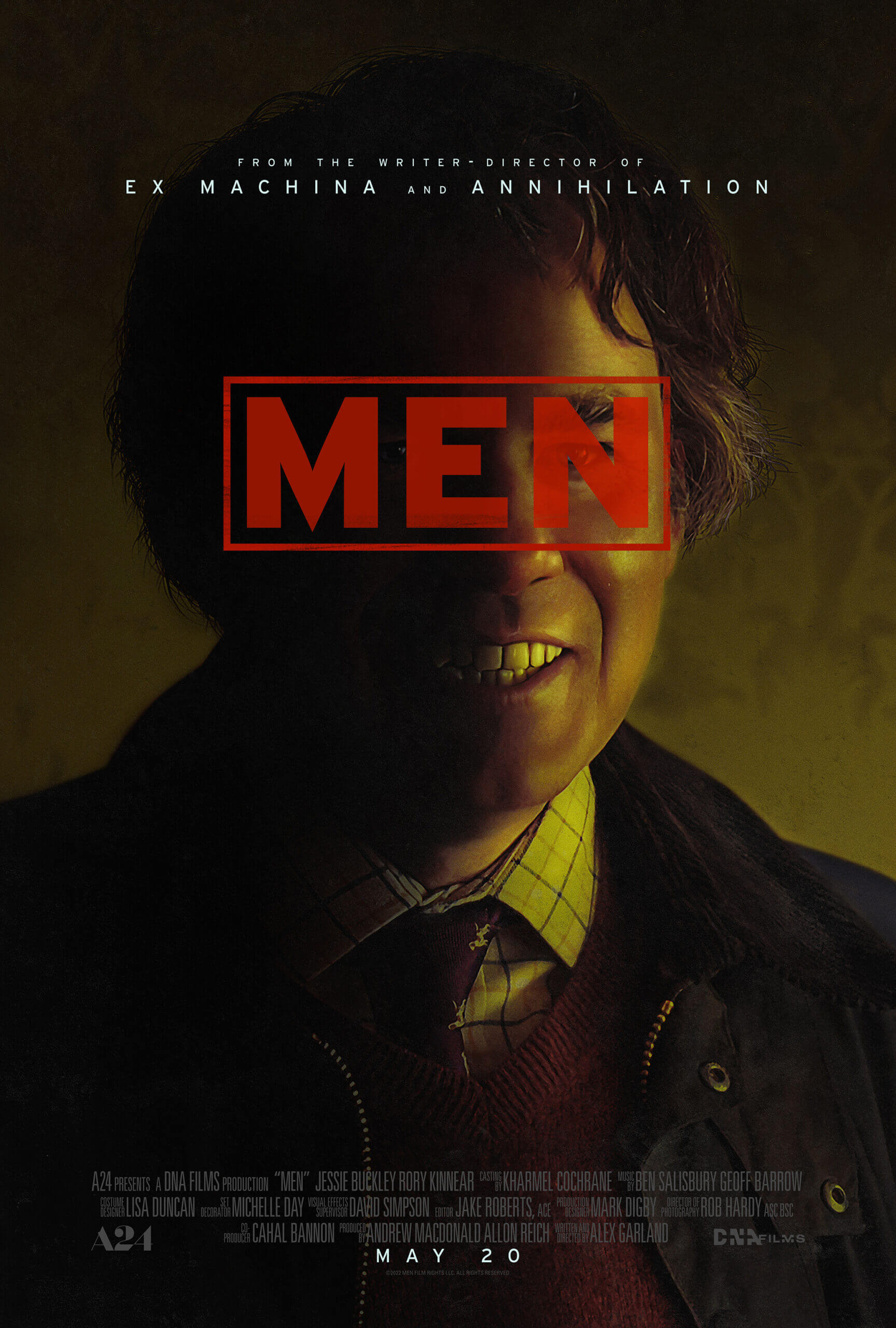
Civil War
By Brian Eggert |
“Every time I survived a war zone, I thought I was sending a warning home: don’t do this,” says Lee, a seasoned photojournalist who has witnessed her share of targeted violence. Having stood feet away from point-blank executions, caught human immolation on camera, and witnessed political unrest on a grand scale, Lee, played by Kirsten Dunst in a performance of astounding gravity, has seen too much. But she could compartmentalize those experiences because they happened elsewhere, in a distant land from which she could return home. That’s no longer the case. In Alex Garland’s Civil War, Lee now captures horrifying images not from a faraway country but from American soil. Lee provides the lens for this heart-racing feature about a near-future scenario where the United States comes apart from internal political strife. Part hypothetical, part study of how extremist ideologies feed an us-versus-them mentality that can only result in conflict and violence, the film’s elusive politics supply a projective test, like a Rorschach, where the audience must interpret the subject and assign its parallels to modern-day America. On one level, Garland’s brilliant and engrossing film pays tribute to the journalists who step back to observe and record from a vantage point that allows them to better identify the patterns in how people acclimatize to political extremism until, suddenly, that becomes their default mode. On another level, although the film only superficially resembles the real US, it nonetheless supplies a vital warning shot at the dangers of increasingly radical leanings.
Civil War is unlike anything Garland has made before. It’s larger in scope than his first three directorial efforts, each of which seems modest by comparison—closed off from the world populated by few characters in a claustrophobic environment. Ex Machina (2015) takes place in the isolated, futuristic home of a tech billionaire, inhabited by two men and two artificial intelligences. Annihilation (2018) centered on four women soldiers who explore a contained, albeit expanding, alien landscape inhabited by unhuman creatures and evolutionary oddities. His most recent film, the divisive Men (2022), found Jessie Buckley tormented in a countryside village by several characters played by Rory Kinnear. In many ways, to see the closest Garland has come to the scope of Civil War, one must go back to his screenplay for 28 Days Later (2002), with its haunting images of an emptied post-apocalyptic London having succumbed to rage-infected zombies. Doubtless, Garland prefers the control of a limited cast and space as a director. Too many characters, too broad a canvas, and it becomes ever more difficult to control. On the press tour promoting his new film, Garland earned headlines for talking about how directing exhausts him, prompting an announcement that he’ll stick to screenwriting alone in the future.
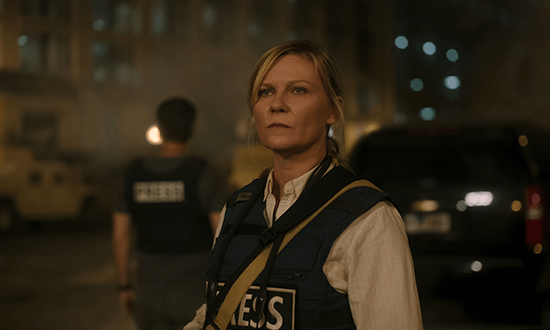 Garland started writing Civil War in 2020, drawing from his anxieties about the world’s trajectory of diametrically opposed viewpoints and unwillingness to compromise. Even so, dissenters and reactionaries have wagged their collective finger at Garland and the distributors at A24 for releasing Civil War during an election year or, alternatively, for not confronting America’s politics directly. For his part, Garland insists his film is less about a specific country than observing human behavior. Americans have already proven to be touchy about Garland using the US for his metaphor, criticizing the filmmaker for not being literal enough. But when the US feels on the brink of another bout of bloody infighting, with congresspeople shouting for civil war and a presidential candidate promising retribution for his enemies, Garland’s disguise isn’t so far off. Still, the writer-director doesn’t use words such as “left” and “right,” nor “democrat” and “republican.” He sees beyond such limited ways of thinking and considers the human toll. Only an allusion to an “ANTIFA Massacre” sounds familiar, though who was massacred and who did the massacring remains ambiguous. The film is political in the sense that it weighs how political extremism, in general, has a cost. Yet, people quickly package and process each escalating factor of extremist behavior—the politicians who use violent rhetoric, the riotous protests, and the attack on the capitol—without measuring the cumulative effect. It all becomes the new normal. Isolating each incident is a coping mechanism, allowing us to get on with our lives by normalizing the radical changes and suffering happening around us. But it also means people willfully ignore the overall deterioration.
Garland started writing Civil War in 2020, drawing from his anxieties about the world’s trajectory of diametrically opposed viewpoints and unwillingness to compromise. Even so, dissenters and reactionaries have wagged their collective finger at Garland and the distributors at A24 for releasing Civil War during an election year or, alternatively, for not confronting America’s politics directly. For his part, Garland insists his film is less about a specific country than observing human behavior. Americans have already proven to be touchy about Garland using the US for his metaphor, criticizing the filmmaker for not being literal enough. But when the US feels on the brink of another bout of bloody infighting, with congresspeople shouting for civil war and a presidential candidate promising retribution for his enemies, Garland’s disguise isn’t so far off. Still, the writer-director doesn’t use words such as “left” and “right,” nor “democrat” and “republican.” He sees beyond such limited ways of thinking and considers the human toll. Only an allusion to an “ANTIFA Massacre” sounds familiar, though who was massacred and who did the massacring remains ambiguous. The film is political in the sense that it weighs how political extremism, in general, has a cost. Yet, people quickly package and process each escalating factor of extremist behavior—the politicians who use violent rhetoric, the riotous protests, and the attack on the capitol—without measuring the cumulative effect. It all becomes the new normal. Isolating each incident is a coping mechanism, allowing us to get on with our lives by normalizing the radical changes and suffering happening around us. But it also means people willfully ignore the overall deterioration.
A metaphoric and borderline surreal take on what might be described as a dystopia, Civil War depicts the US split into two factions, with California and Texas seceding from the country into the Western Forces (WF), lately joined by other states in an attack on the government proper. The specifics of the war are beside the point. Quite intentionally, the viewer does not root for the unnamed entity of the POTUS (Nick Offerman). Nor do we want the WF’s attempted takeover to succeed. Instead, we hope for Lee and her fellow Reuters colleague Joel (Wagner Moura) to reach their planned destination of Washington, D.C., some 897 miles away from their initial location in New York, to conduct the first interview with the POTUS in over a year. Apparently, Offerman’s president has been too busy in his third term—he disbanded the FBI and ordered air strikes on American citizens—to conduct interviews. To reach him, Lee and Joel are joined by an aspiring photographer, Jessie (Cailee Spaeny, superb in last year’s Priscilla and here), and the veteran New York Times journalist Sammy (Stephen McKinley Henderson). Three generations of journalists pack into an SUV labeled “PRESS,” which, in most circumstances, would keep them safe. The film also marks a close-knit affair in terms of Garland’s casting, which finds him reteaming with some of his ensemble from his FX limited series DEVS, among them Offerman, Spaeny, Henderson, and Sonoya Mizuno, who shows up later.
Much of Civil War plays like a road movie, with their journey set on eerily empty highways and country roads; others appear utterly demolished, “vaporized,” or littered with wreckage from some battle. They pass by bombed-out malls, apartment buildings, and suburban neighborhoods. But one small town seems untouched by the conflict spilling out across the country. The reporters interview a shopgirl at a clothing store who explains, “We try to stay out.” Yet, one look outside at the snipers on the rooftops, and her claim to neutrality proves hollow. You can’t stay out. At various stops along the way, the group encounters local militia or soldiers with semi-automatic weapons who might string them up or bury them in a mass grave. One of the well-armed militants, played by Jesse Plemons, asks Joel, “What kind of American are you?” In an extremist world, there’s no right answer to that question. Joel evades a direct response, answering instead that he hails from Florida, Lee from Colorado, and Jessie from Missouri. Apparently, these qualify as “American” states. A reporter born in Hong Kong isn’t so lucky. In moments like this, it might be tempting to call the film episodic, but that ignores the thread of how one sequence feeds into another. Civil War has the quality of a scopic survey of a landscape torn asunder by hardliner fanatics.
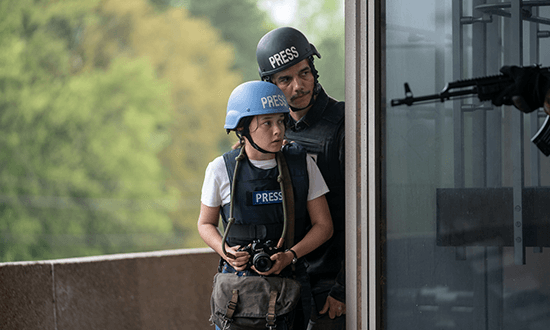 Garland, whose father was a political cartoonist, believes in the importance of journalistic distance and observation, as opposed to editorial writing that feeds the echo chamber of much contemporary media. Thus, his characters resolve to stay out of the political debates. “We record so other people ask [the difficult questions],” Lee rationalizes. To be sure, Civil War is less about the war and its particulars than a tribute to photojournalists who brave the front lines and most dangerous conditions to capture the story. It has more in common with Haskel Wexler’s Medium Cool (1969), Oliver Stone’s Salvador (1986), and Michael Winterbottom’s Welcome to Sarajevo (1997) than a straight war film. As part of his tribute, the writer-director named Lee after Lee Miller, the fashion photographer who became a war correspondent during the Second World War and captured images from the Blitz and German concentration camps. However, Garland never questions how many journalists in America can claim objectivity. If there’s any idealism or romanticism to this otherwise bleak, confronting, rather incendiary vision, it’s that Garland believes so much in the power of journalists who often fail to live up to such standards. Regardless, Lee and her colleagues snap photos and hope their audience can decide what it means (which is optimistic, given the early reactions to Civil War). They witness frantic scenes that place the viewer in the action, shot with an urgency that conveys a really-there aesthetic. They capture soldiers firing on one another, others executed, and eventually, a military assault on Washington, D.C.
Garland, whose father was a political cartoonist, believes in the importance of journalistic distance and observation, as opposed to editorial writing that feeds the echo chamber of much contemporary media. Thus, his characters resolve to stay out of the political debates. “We record so other people ask [the difficult questions],” Lee rationalizes. To be sure, Civil War is less about the war and its particulars than a tribute to photojournalists who brave the front lines and most dangerous conditions to capture the story. It has more in common with Haskel Wexler’s Medium Cool (1969), Oliver Stone’s Salvador (1986), and Michael Winterbottom’s Welcome to Sarajevo (1997) than a straight war film. As part of his tribute, the writer-director named Lee after Lee Miller, the fashion photographer who became a war correspondent during the Second World War and captured images from the Blitz and German concentration camps. However, Garland never questions how many journalists in America can claim objectivity. If there’s any idealism or romanticism to this otherwise bleak, confronting, rather incendiary vision, it’s that Garland believes so much in the power of journalists who often fail to live up to such standards. Regardless, Lee and her colleagues snap photos and hope their audience can decide what it means (which is optimistic, given the early reactions to Civil War). They witness frantic scenes that place the viewer in the action, shot with an urgency that conveys a really-there aesthetic. They capture soldiers firing on one another, others executed, and eventually, a military assault on Washington, D.C.
Though its narrative is rooted in journalistic objectivity, Civil War is not without considerable emotional immediacy and involvement. Garland and his actors create characters with deeply felt personalities, such as Sammy’s warm, fatherly presence, Joel’s wild energy, and Jessie’s innocence that gradually fades away. Dunst’s Lee is central, and her performance ranks among Marie Antoinette (2006) and Melancholia (2011) as one of her best. Lee has seen everything. Nothing surprises her anymore, and she’s a long way from getting the hard-on for war experienced by Joel or the surge of adrenaline that prompts Jessie to proclaim with delirious glee, “We’re so close!” Dunst plays Lee with weathered eyes and a beaten-down body. She carries her experiences like a trauma mop long overdue for a wringing. Her callus has formed over years, leaving her leathery and worn, but not immune to the events happening around her. So when Jessie says she wants to be a war photographer, Lee is sad for her. She sees Jessie getting involved and it worries her, afraid that she, too, might develop a skin so thick she can no longer feel. Late in the film, while Lee’s colleagues lose themselves in the WF’s race toward the capitol, Lee breaks down. She can no longer take it. Garland and Dunst express the devastating reality of Lee trying to maintain impartiality when the world seems to be falling apart around her. And yet, she gets up and does the job anyway.
Though the film features myriad action sequences and shootouts, Garland, quite astoundingly, avoids sensationalizing war or making the violent scenes entertaining. The violence isn’t thrilling but horrifying, and Jessie and Joel’s energized response to leap into the action, recklessly so, is disturbing. Garland reaches for a documentary aesthetic at times to avoid any hint of glamorizing what occurs. This is particularly effective in IMAX, where sound and image envelop the viewer, forcing us to feel every jarring gunshot and every shocking death with unfathomable tension. No death feels unconsidered or unmourned here, unlike countless Hollywood spectacles where thousands die in an instant without a second thought or due consideration. Shooting in Georgia to extend the production’s $50 million budget with the state’s tax breaks, Garland’s attention to realism inspired production designer Caty Maxey to build convincing street facades to stand in for Washington, D.C., making the finale frighteningly real. Likewise, military advisor Ray Mendoza and his ex-Navy SEAL colleagues play the soldiers, lending the picture a stirring authenticity that makes the action sequence feel less like a blockbuster than a slice of reality.
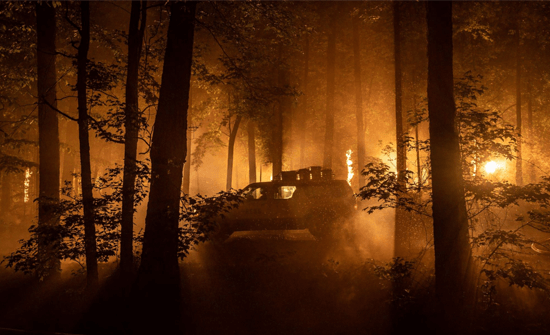 But like each of Garland’s films, there’s a sublime beauty to be found in Civil War. Consider when the group stops at the aforementioned clothing store, and Jessie convinces Lee to try on a dress, something she hasn’t done in a long while. Jessie even conjures a smile out of Lee—twice—giving her a brief glimmer of her forgotten humanity. At another point, Lee rests her head in a field and closes her eyes amid wildflowers, blocking out the violence around her. Many such scenes, shot by Rob Hardy, cinematographer on each of Garland’s directorial efforts to date, have a narrow focus with a spectral effect around the unfocused edges, lending an almost hallucinatory, rainbow quality to them. The look recalls the alien influence on Nature in Annihilation, resulting in an effect called the Shimmer. Whereas much of the film registers with a docu-style immediacy that reflects its journalist characters, Garland embraces the occasional surreal image to underscore his allegorical intent. Take when Lee and company drive through a burning forest with embers filling the sky—a sight that must be seen on the biggest screen possible for its full, uncanny, transportive impact. These qualities suggest, in visual terms, an other-worldliness to the film that’s less a direct reflection of today’s America than an artistic prompt through which his audience can analyze it.
But like each of Garland’s films, there’s a sublime beauty to be found in Civil War. Consider when the group stops at the aforementioned clothing store, and Jessie convinces Lee to try on a dress, something she hasn’t done in a long while. Jessie even conjures a smile out of Lee—twice—giving her a brief glimmer of her forgotten humanity. At another point, Lee rests her head in a field and closes her eyes amid wildflowers, blocking out the violence around her. Many such scenes, shot by Rob Hardy, cinematographer on each of Garland’s directorial efforts to date, have a narrow focus with a spectral effect around the unfocused edges, lending an almost hallucinatory, rainbow quality to them. The look recalls the alien influence on Nature in Annihilation, resulting in an effect called the Shimmer. Whereas much of the film registers with a docu-style immediacy that reflects its journalist characters, Garland embraces the occasional surreal image to underscore his allegorical intent. Take when Lee and company drive through a burning forest with embers filling the sky—a sight that must be seen on the biggest screen possible for its full, uncanny, transportive impact. These qualities suggest, in visual terms, an other-worldliness to the film that’s less a direct reflection of today’s America than an artistic prompt through which his audience can analyze it.
Watching Civil War can be harrowing and upsetting. When the 108-minute feature ends, most won’t leave feeling that some catharsis has been achieved. They will leave shaken, possibly angry; the film might even be more polarizing than Men. Garland confronts us with the reality that we’re an entire culture suffering from boiling frog syndrome. He questions a society that no longer believes in objective truth, that has become so embedded into siloed ideologies that the only answer becomes annihilating anyone not on your side. When anyone who doesn’t believe what you do becomes dehumanized, that’s when war and other such horrors become a viable option. At one point in the film, a sniper explains to Joel his reasons for killing, with a touch of sarcasm: “Someone’s trying to kill us. We’re trying to kill them.” That’s the sort of thinking Garland hopes to expose with Civil War. The specifics of America and its internal problems supply a launchpad for his ideas without directly addressing real-life politics, and in effect, Garland asks that viewers step back and try to look at the big picture. With so many people entrenched in their perspectives, Garland values how journalists can step outside of ideology and view such a situation objectively. He hopes his audience will do the same; though, one suspects many viewers will reject his film because it refuses to confirm their biases or take a stance on real-world issues. But its ambiguities and interpretive potential are exactly what make Civil War great filmmaking.
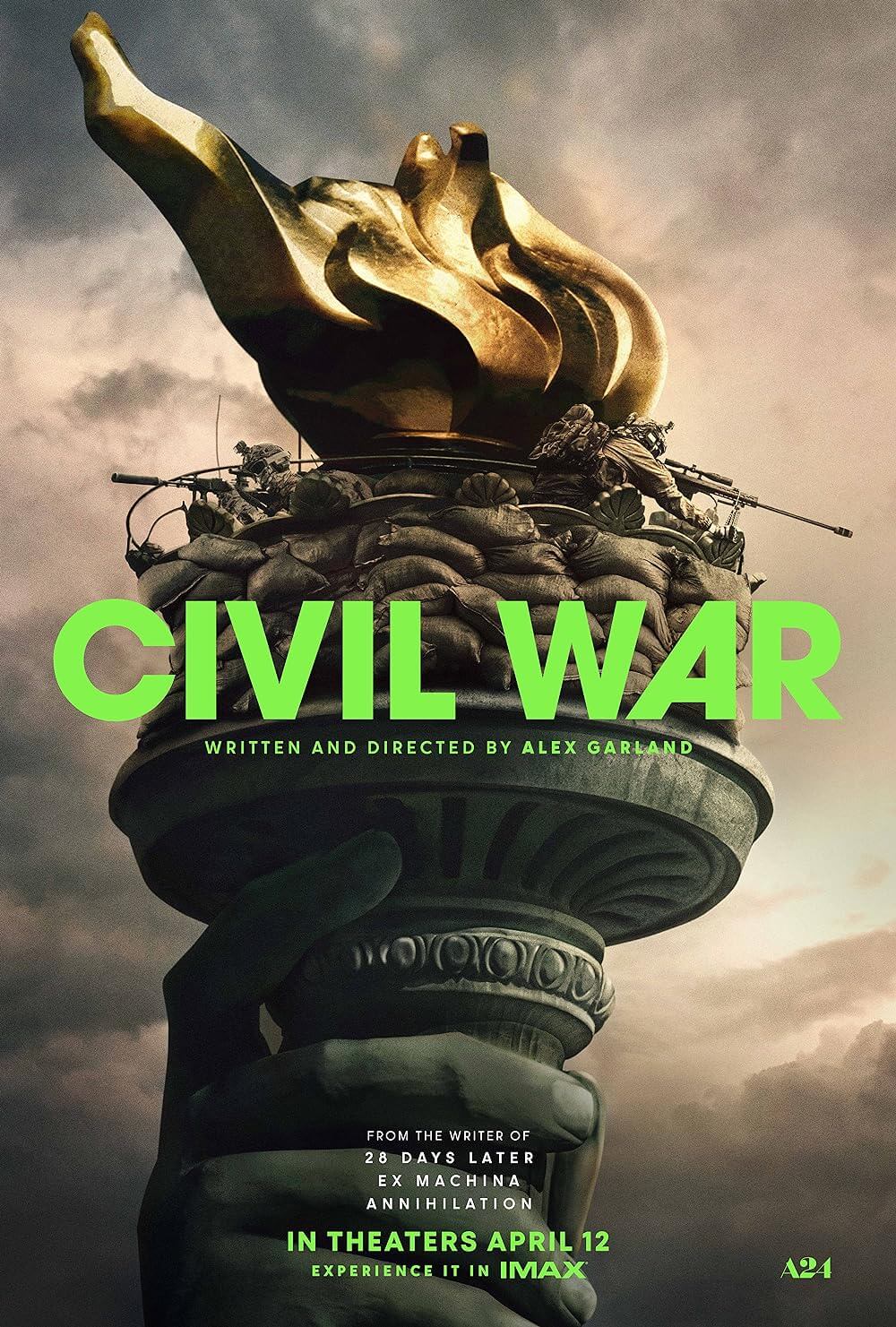
Unlock More from Deep Focus Review
To keep Deep Focus Review independent, I rely on the generous support of readers like you. By joining our Patreon community or making a one-time donation, you’ll help cover site maintenance and research materials so I can focus on creating more movie reviews and critical analysis. Patrons receive early access to reviews and essays, plus a closer connection to a community of fellow film lovers. If you value my work, please consider supporting DFR on Patreon or show your support in other ways.
Thank you for your readership!
Brian Eggert | Critic, Founder
Deep Focus Review


